Grow Passion Fruit Easily and transform your garden into a tropical paradise! Have you ever dreamed of plucking your own sweet, tangy passion fruit straight from the vine? It sounds idyllic, doesn’t it? Well, it’s more achievable than you might think! This DIY guide is packed with simple, effective tricks to help you cultivate these exotic fruits, even if you don’t have a green thumb (yet!).
Passion fruit, with its vibrant flowers and uniquely flavored fruit, has a rich history rooted in South America. Indigenous cultures have long valued it for both its culinary and medicinal properties. Today, its popularity has spread worldwide, and for good reason! But let’s be honest, growing passion fruit can sometimes feel like a challenge. That’s where these DIY hacks come in.
I’ve found that many gardeners struggle with common issues like poor fruit production, pest infestations, and knowing the best way to support the vines. That’s why I’m sharing my tried-and-true methods to help you grow passion fruit easily and overcome these hurdles. Imagine the satisfaction of harvesting your own delicious fruit, knowing you nurtured it from vine to table. Plus, passion fruit is packed with vitamins and antioxidants, making it a healthy and rewarding addition to your garden. So, let’s dive in and unlock the secrets to successful passion fruit cultivation!
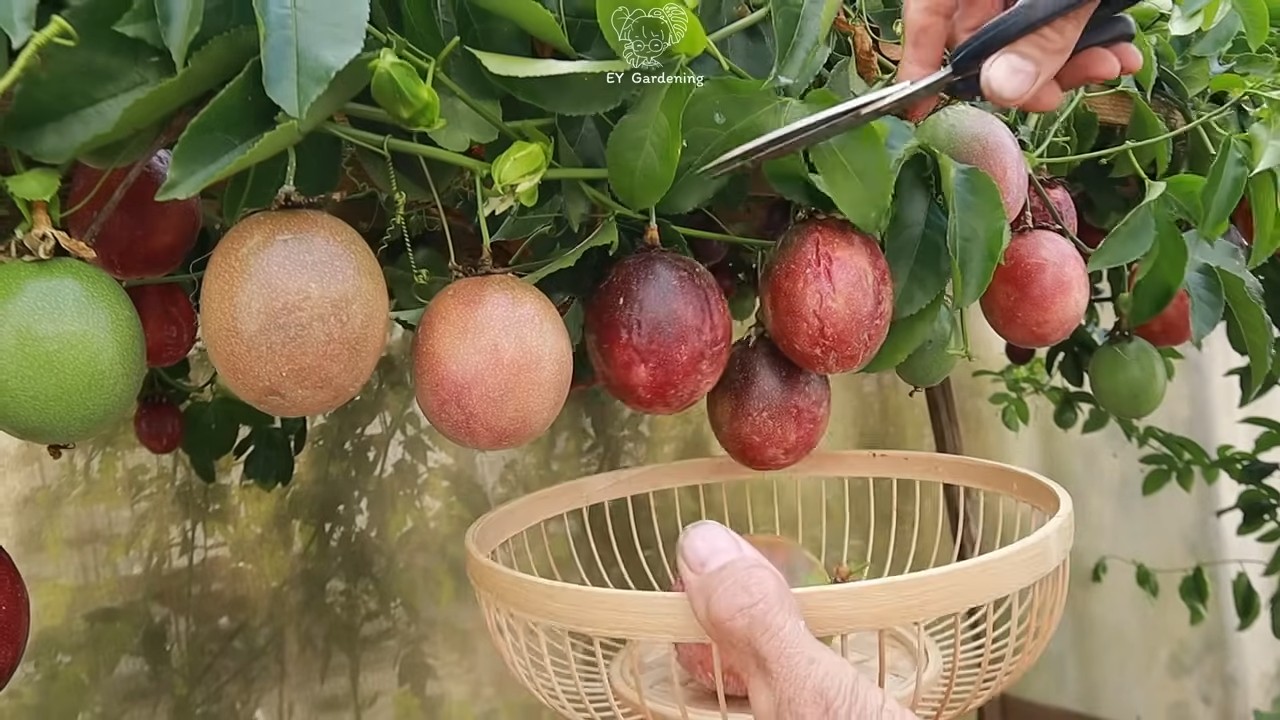
Grow Passion Fruit Like a Pro: My Foolproof DIY Guide
Hey there, fellow plant enthusiasts! I’m so excited to share my tried-and-true method for growing passion fruit. Trust me, it’s easier than you think, and the reward – those delicious, fragrant fruits – is totally worth it. I’ve broken down the process into manageable steps, so even if you’re a beginner, you’ll be harvesting your own passion fruit in no time.
Choosing the Right Passion Fruit Variety
Before we dive into the nitty-gritty, let’s talk about choosing the right passion fruit variety. This is crucial for success, as some varieties are better suited to certain climates than others.
* Purple Passion Fruit (Passiflora edulis): This is the most common variety and thrives in warm, subtropical climates. It’s known for its tart, aromatic fruit.
* Yellow Passion Fruit (Passiflora edulis flavicarpa): This variety is more tolerant of warmer temperatures and is often used for commercial production. The fruit is larger and more acidic than the purple variety.
* Sweet Granadilla (Passiflora ligularis): If you live in a cooler climate, this might be a good option. It’s less acidic and has a sweeter flavor.
My Recommendation: If you’re unsure, start with the purple passion fruit. It’s readily available and relatively easy to grow. Check with your local nursery to see what varieties thrive in your area.
Preparing for Planting: Location, Location, Location!
Passion fruit vines need plenty of sunlight and well-draining soil. Here’s what to consider when choosing a location:
* Sunlight: Aim for at least 6-8 hours of direct sunlight per day. More is better!
* Soil: Passion fruit prefers slightly acidic soil (pH 6.0-7.0). Amend your soil with compost or other organic matter to improve drainage and fertility.
* Support: These vines are climbers, so they need a strong trellis, fence, or arbor to grow on. Make sure your support structure is sturdy enough to handle the weight of a mature vine laden with fruit.
* Protection from Wind: While they love sun, passion fruit vines don’t appreciate strong winds. Choose a location that’s somewhat sheltered.
Step-by-Step Planting Guide
Okay, let’s get our hands dirty! Here’s how to plant your passion fruit vine:
1. Prepare the Planting Hole: Dig a hole that’s twice as wide and as deep as the root ball of your passion fruit plant.
2. Amend the Soil: Mix the soil you removed from the hole with compost or other organic matter. This will improve drainage and provide essential nutrients.
3. Remove the Plant from its Container: Gently remove the passion fruit plant from its container, being careful not to damage the roots. If the roots are circling the pot, gently loosen them before planting.
4. Plant the Vine: Place the plant in the hole, making sure the top of the root ball is level with the surrounding soil.
5. Backfill the Hole: Fill the hole with the amended soil, gently firming it around the plant.
6. Water Thoroughly: Water the newly planted vine deeply to help settle the soil and encourage root growth.
7. Mulch: Apply a layer of mulch around the base of the plant to help retain moisture and suppress weeds. Keep the mulch a few inches away from the stem to prevent rot.
Caring for Your Passion Fruit Vine: The Key to Abundant Fruit
Now that your passion fruit vine is planted, it’s time to focus on providing the care it needs to thrive.
Watering
* Regular Watering: Passion fruit vines need consistent moisture, especially during the growing season. Water deeply whenever the top inch of soil feels dry.
* Avoid Overwatering: While they need water, passion fruit vines don’t like to sit in soggy soil. Overwatering can lead to root rot.
* Drip Irrigation: Consider using drip irrigation to provide a consistent and efficient water supply.
Fertilizing
* Balanced Fertilizer: Feed your passion fruit vine with a balanced fertilizer (e.g., 10-10-10) every 4-6 weeks during the growing season.
* Organic Options: You can also use organic fertilizers like compost tea or fish emulsion.
* Avoid Over-Fertilizing: Too much fertilizer can lead to excessive foliage growth at the expense of fruit production.
Pruning
* Regular Pruning: Pruning is essential for maintaining a healthy and productive passion fruit vine.
* Remove Dead or Diseased Growth: Prune away any dead, damaged, or diseased branches.
* Thin Out Crowded Areas: Thin out crowded areas to improve air circulation and sunlight penetration.
* Encourage Fruiting: Prune back the tips of the vines to encourage branching and fruit production.
* Best Time to Prune: The best time to prune is after the main fruiting season.
Pest and Disease Control
* Common Pests: Watch out for pests like aphids, spider mites, and scale.
* Organic Pest Control: Use organic pest control methods like insecticidal soap or neem oil to control pests.
* Good Air Circulation: Proper air circulation can help prevent fungal diseases.
* Disease Prevention: Remove any diseased leaves or branches promptly.
Training Your Passion Fruit Vine
Training your passion fruit vine is crucial for maximizing fruit production and keeping it manageable.
1. Choose a Training System: Decide on a training system that works for your space and support structure. Common options include:
* Trellis: Train the vine to grow along a trellis, spreading out the branches evenly.
* Fence: Train the vine to grow along a fence, securing the branches with ties.
* Arbor: Train the vine to grow over an arbor, creating a beautiful and shady space.
2. Guide the Vines: As the vine grows, gently guide the main stems along the support structure, using plant ties or twine to secure them.
3. Encourage Lateral Growth: Pinch off the tips of the main stems to encourage lateral growth, which will produce more fruiting branches.
4. Maintain Air Circulation: Ensure good air circulation by thinning out crowded areas and removing any crossing or rubbing branches.
Harvesting Your Passion Fruit
This is the moment we’ve all been waiting for! Here’s how to know when your passion fruit is ripe and ready to harvest:
* Color Change: The fruit will change color from green to purple or yellow, depending on the variety.
* Wrinkled Skin: The skin will become slightly wrinkled.
* Heavy Feel: The fruit will feel heavy for its size.
* Easy Detachment: The fruit will detach easily from the vine with a gentle tug.
Harvesting Tips:
* Pick Regularly: Harvest ripe fruit regularly to encourage further production.
* Handle with Care: Handle the fruit gently to avoid bruising.
* Storage: Store ripe passion fruit in the refrigerator for up to a week.
Troubleshooting Common Passion Fruit Problems
Even with the best care, you might encounter some problems along the way. Here are some common issues and how to address them:
* Lack of Fruit: If your vine isn’t producing fruit, it could be due to a lack of sunlight, poor pollination, or nutrient deficiencies. Make sure your vine is getting enough sunlight, consider hand-pollinating the flowers, and fertilize regularly.
* Yellowing Leaves: Yellowing leaves can indicate a nutrient deficiency, overwatering, or pest infestation. Check the soil drainage, fertilize with a balanced fertilizer, and inspect the leaves for pests.
* Root Rot: Root rot is caused by overwatering and poor drainage. Improve drainage by amending the soil with compost or perlite, and water less frequently.
* Pest Infestations: Regularly inspect your vine for pests and treat infestations promptly with organic pest control methods.
Hand-Pollinating Passion Fruit Flowers (If Needed)
Sometimes, passion fruit vines need a little help with pollination, especially if you don’t have many bees or other pollinators in your area. Here’s how to hand-pollinate your passion fruit flowers:
1. Identify the Male and Female Parts: The passion fruit flower has both male (anthers) and female (stigma) parts. The anthers are the pollen-bearing structures, and the stigma is the sticky part that receives the pollen.
2. Collect Pollen: Use a small brush or cotton swab to collect pollen from the anthers.
3. Transfer Pollen: Gently transfer the pollen to the stigma of another flower.
4. Best Time to Pollinate: The best time
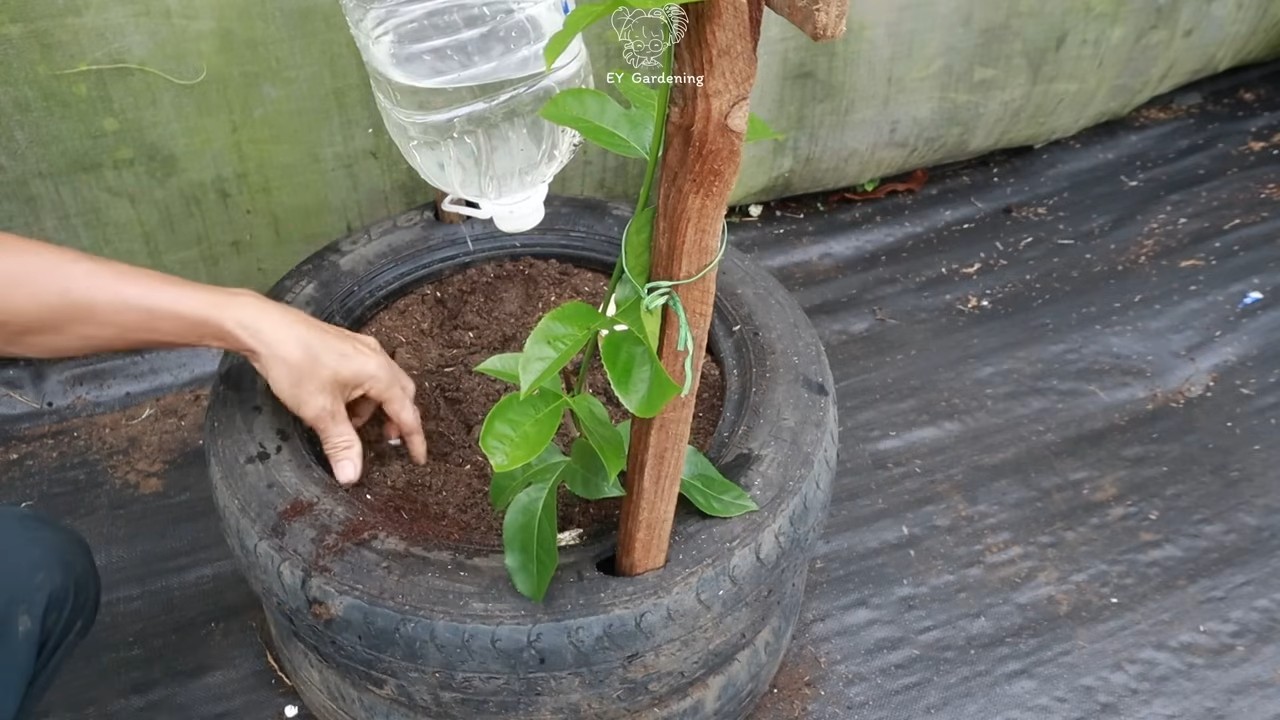
Conclusion
So, there you have it! Growing passion fruit easily doesn’t have to be a daunting task reserved for seasoned gardeners. With a little know-how and this simple DIY trick, you can transform your backyard, balcony, or even a sunny windowsill into a thriving passion fruit paradise. We’ve demystified the process, breaking it down into manageable steps that anyone can follow, regardless of their gardening experience.
Why is this DIY trick a must-try? Because it significantly increases your chances of success, especially if you’re starting from seeds or cuttings. It provides a controlled environment, protecting your young passion fruit plants from harsh weather, pests, and diseases during their vulnerable early stages. Plus, it’s incredibly rewarding to witness the fruits of your labor – literally! Imagine harvesting your own juicy, fragrant passion fruit, knowing you nurtured it from the very beginning.
But the beauty of this method lies in its adaptability. Feel free to experiment with different potting mixes to find what works best for your local climate and soil conditions. Consider adding slow-release fertilizer to the mix for an extra boost of nutrients. If you live in a colder region, you can easily move your potted passion fruit plants indoors during the winter months, ensuring a continuous supply of these delicious fruits.
Variations to consider:
* Vertical Gardening: Passion fruit vines love to climb! Train them up a trellis, fence, or even a repurposed pallet to create a stunning vertical garden.
* Hydroponics: For the more adventurous gardener, passion fruit can also be grown hydroponically. This method requires a bit more technical knowledge but can yield impressive results.
* Grafting: If you want to ensure specific fruit characteristics or disease resistance, consider grafting your passion fruit onto a hardier rootstock.
We’re confident that this DIY trick will empower you to grow passion fruit easily and successfully. Don’t be afraid to get your hands dirty and embrace the learning process. Gardening is all about experimentation and discovery.
Now, it’s your turn! We encourage you to try this method and share your experiences with us. What challenges did you encounter? What successes did you celebrate? What variations did you try? Your feedback will not only help us improve this guide but also inspire other aspiring passion fruit growers. Share your photos, tips, and stories in the comments section below. Let’s create a community of passionate passion fruit enthusiasts!
Happy growing!
Frequently Asked Questions (FAQ)
What is the best time of year to start growing passion fruit?
The best time to start growing passion fruit depends on your climate. In warmer climates with mild winters, you can plant passion fruit year-round. However, in cooler climates, it’s best to start in the spring after the last frost. This gives the plants ample time to establish themselves before the onset of winter. Starting seeds indoors 6-8 weeks before the last expected frost is also a great option for colder regions. This allows you to get a head start on the growing season and protect the young seedlings from the cold.
How much sunlight does passion fruit need?
Passion fruit vines thrive in full sun, requiring at least 6-8 hours of direct sunlight per day. Adequate sunlight is crucial for healthy growth, flowering, and fruit production. If you’re growing passion fruit indoors, place it near a sunny window or supplement with grow lights. Insufficient sunlight can lead to leggy growth, reduced flowering, and smaller, less flavorful fruit.
What kind of soil is best for passion fruit?
Passion fruit prefers well-draining soil that is rich in organic matter. A slightly acidic to neutral pH (around 6.0 to 7.0) is ideal. Amend heavy clay soils with compost, peat moss, or other organic materials to improve drainage and aeration. Avoid soils that are prone to waterlogging, as this can lead to root rot. A good potting mix for container-grown passion fruit consists of equal parts potting soil, compost, and perlite or vermiculite.
How often should I water my passion fruit plant?
Water passion fruit plants regularly, especially during hot, dry weather. Keep the soil consistently moist but not waterlogged. Water deeply whenever the top inch of soil feels dry to the touch. Reduce watering during the winter months when the plant is not actively growing. Overwatering can lead to root rot, so it’s essential to ensure proper drainage.
How do I fertilize my passion fruit plant?
Passion fruit plants are heavy feeders and benefit from regular fertilization. Use a balanced fertilizer (e.g., 10-10-10) during the growing season, following the instructions on the fertilizer package. You can also supplement with organic fertilizers such as compost tea or fish emulsion. Avoid over-fertilizing, as this can lead to excessive vegetative growth at the expense of flowering and fruiting.
How long does it take for passion fruit to produce fruit?
Passion fruit plants typically start producing fruit within 12-18 months of planting, although some varieties may take longer. The time to fruiting can also depend on factors such as climate, soil conditions, and the overall health of the plant. Proper care, including adequate sunlight, watering, and fertilization, can help accelerate fruit production.
How do I prune my passion fruit vine?
Pruning is essential for maintaining the health and productivity of passion fruit vines. Prune regularly to remove dead, diseased, or overcrowded growth. You can also prune to control the size and shape of the vine. The best time to prune is after the main fruiting season. Avoid heavy pruning, as this can reduce fruit production.
What are some common pests and diseases that affect passion fruit?
Passion fruit plants can be susceptible to various pests and diseases, including aphids, spider mites, scale insects, and fungal diseases such as root rot and fusarium wilt. Monitor your plants regularly for signs of infestation or disease. Treat pests with insecticidal soap or neem oil. Prevent fungal diseases by ensuring proper drainage and avoiding overwatering.
How do I harvest passion fruit?
Passion fruit is ready to harvest when the fruit changes color from green to purple or yellow, depending on the variety. The fruit will also become slightly wrinkled and have a fragrant aroma. Gently twist the fruit from the vine. Ripe passion fruit can be stored at room temperature for a few days or in the refrigerator for up to a week.
Can I grow passion fruit in a container?
Yes, passion fruit can be successfully grown in containers, especially in regions with colder climates where the plants need to be moved indoors during the winter. Choose a large container (at least 20 gallons) with good drainage. Use a well-draining potting mix and provide a trellis or other support for the vine to climb. Container-grown passion fruit may require more frequent watering and fertilization than plants grown in the ground.

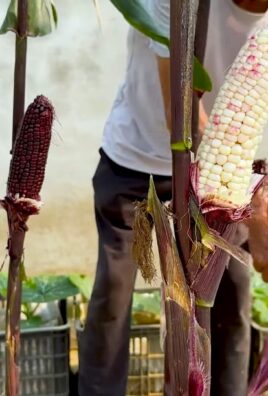
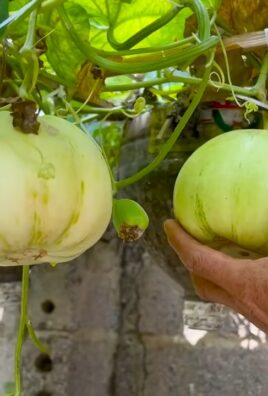
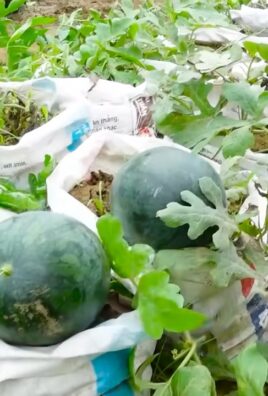
Leave a Comment